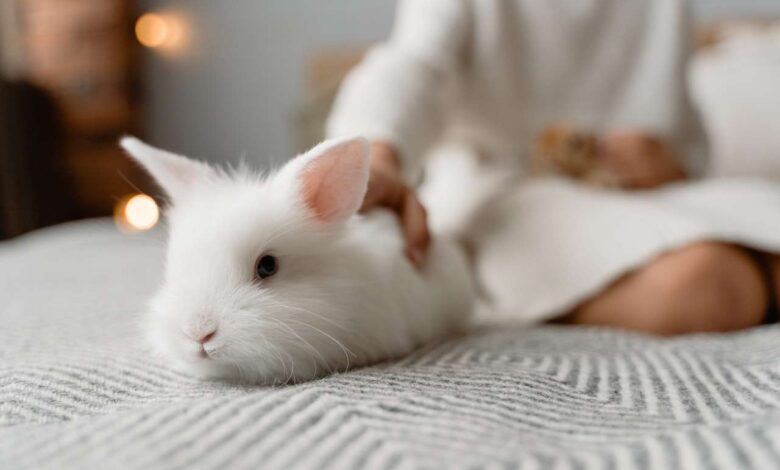
Welcoming a new furry friend into your home is an exciting journey, but introduce a new rabbit to your existing pets requires careful planning and consideration. Patience and a gradual approach are key to fostering a harmonious environment for all your beloved companions.
Preparing for the Introduction
Before the first encounter, it’s essential to set the stage for a successful integration. Begin by establishing a neutral space where the initial meeting can take place. This could be a shared room or an area that none of the pets consider as their territory.
To help your pets become familiar with one another’s scents, consider using scent swapping techniques. This involves introducing the pets to each other’s scent through blankets, toys, or other items that carry their scent before the physical introduction.
How to Introduce a New Rabbit to Different Pets
A. Introduce a New Rabbit to a Dog
When introduce a new rabbit to a dog, start with short, supervised sessions to allow them to become accustomed to each other’s presence. Use positive reinforcement, rewarding both the dog and the rabbit for calm and non-aggressive behavior.
B. Introduce a New Rabbit to a Cat
To introduce a new rabbit to a cat, maintain a controlled environment where the rabbit has an escape route to a secure space. Gradually increase their interaction time, always observing their behavior and ensuring the rabbit has the option to retreat if necessary.
C. Introducing a Rabbit to Another Rabbit
When introducing a new rabbit to an existing one, begin by keeping them in separate enclosures before gradually allowing supervised interaction. Ensure each rabbit has enough space and resources to prevent any territorial disputes.
D. Introducing a Rabbit to Other Small Animals
If introducing a rabbit to other small animals like hamsters, gerbils, or guinea pigs, carefully monitor their interactions. Provide separate enclosures and gradual introductions in a controlled and neutral space.
Supervising the Introduction Process
Close supervision during the initial stages is crucial to prevent any aggressive behavior. Monitor their body language and intervene if any signs of hostility arise. Maintain a calm and reassuring presence to create a sense of security for all pets involved.
Troubleshooting Common Issues
During the introduction phase, it’s essential to anticipate and address potential conflicts. If aggressive behavior occurs, consider separating the pets and reintroduce them at a later stage. Provide each pet with ample individual attention to prevent feelings of neglect or jealousy.
Special Cases and Considerations
A. Introducing Different Genders of Rabbits
Introducing male and female rabbits requires a cautious approach to prevent unexpected breeding. Neutering or spaying the rabbits can minimize the likelihood of territorial behavior.
B. Introducing Neutered and Unneutered Rabbits
Introducing neutered and unneutered rabbits involves careful observation, as unneutered rabbits may display more dominant behavior. Provide adequate space and resources to minimize potential conflicts.
C. Introducing Older or Functional Needs Rabbits to Others
Older or functional needs rabbits may require additional patience and gentle handling during the introduction process. Ensure they have a safe retreat and minimal stress during interactions.
D. Introduce a New Rabbits to a Household with Young Children
Educate children on the importance of gentle interactions and respecting the animals’ boundaries. Encourage supervised and controlled interactions to prevent any rough handling or accidental harm.
E. Introduce a New Rabbit to a Household with Other Small Animals
When introducing rabbits to households with other small animals, maintain separate living spaces to prevent any confrontations or territorial disputes. Gradually introduce them in a neutral space while closely monitoring their behavior.
Utilizing Positive Reinforcement
Encourage positive behavior by using treats, toys, or affection as rewards during the introduction process. Reinforce good behavior to create positive associations between the animals and promote a friendly environment.
Ensuring Safety and Successful Integration
Consistent patience and understanding are crucial for a successful integration. Ensure that all pets have their own space, resources, and attention to prevent any feelings of competition or neglect. Regularly assess their interactions and provide a safe and comforting environment for all.
Introducing a new rabbit to your existing pets can be a rewarding experience with the right approach. By fostering a patient and secure environment, you can create a harmonious and joyful home for all your furry companions. Remember to prioritize their safety and well-being throughout the integration process, and embrace the journey of building a loving and interconnected pet family.








